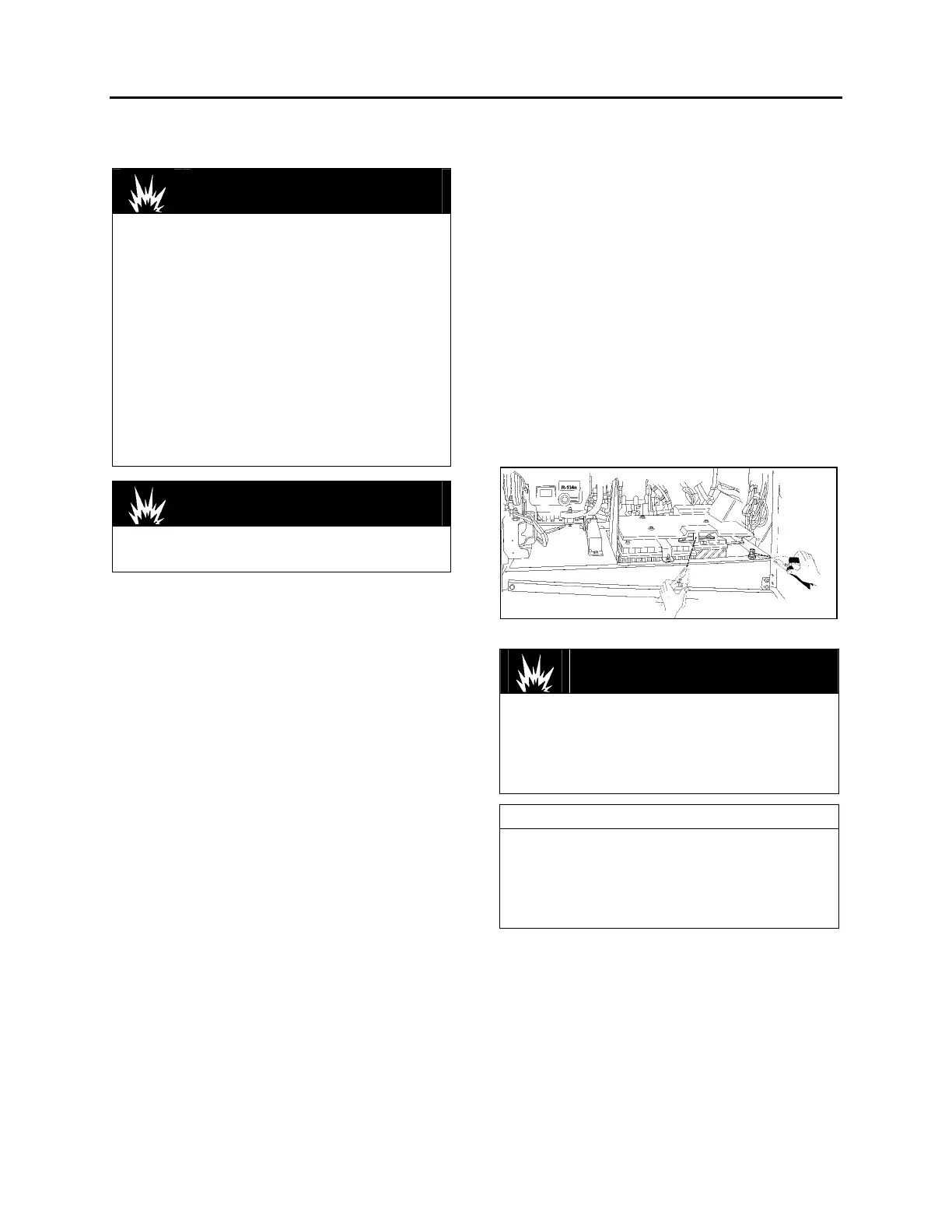Section 06: ELECTRICAL
PA1553
21
by using energy from a booster battery or the
battery from another vehicle.
DANGER
Jump starting may be dangerous and should
be attempted only if the following conditions
are met:
The booster battery or the battery in the other
vehicle must be of the same voltage as the
battery in the vehicle being started, and must
be negative grounded.
If the booster battery is a sealed-type battery
without filler openings or caps, its test
indicator must be dark or a green dot must be
visible. Do not attempt jump starting if the test
indicator of the booster battery or the
discharged battery has a light or bright center.
DANGER
Follow the procedure exactly as outlined
hereafter. Avoid making sparks.
1. Wear eye protection and remove rings,
watches with metal bands and other metal
jewelry.
2. Apply parking brake and place the
transmission shift lever or push-button pads
in Neutral (N) position in both vehicles. Turn
off lights, heater and other electrical loads.
Observe the charge indicator. If the indicator
in the discharged battery is illuminated,
replace the battery. Do not attempt jump
starting when indicator is illuminated. If the
test indicator is dark and has a green dot in
the center, failure to start is not due to a
discharged battery and the cranking system
should be checked. If charge indicator is
dark but the green dot does not appear in
center, proceed as follows:
3. Connect one end of one red jumper cable to
the positive (+) terminal of the booster power
source and the other end to the positive (+)
terminal bar on the battery, located in the
engine compartment R.H. side area (refer to
fig. 18).
4. Connect one end of the remaining negative
jumper cable (black) to the negative (-)
terminal of the booster power source and the
other end of the black jumper cable to the
negative (-) terminal on the structure.
5. Make sure the clips from one cable do not
inadvertently touch the clips on the other
cable. Do not lean over the battery when
making connections. The ground connection
must provide good electrical conductivity and
current carrying capacity.
6. Start the engine in the vehicle that is
providing the jump start. Let the engine run
for a few minutes, then start the engine in the
vehicle that has the discharged batteries.
7. When removing the jumper cables, perform
the above procedure exactly in reverse
order.
On all XLII MTH, booster terminals are located in
the engine compartment on the R.H. side and
are accessible through engine compartment R.H.
side door (Fig. 18).
FIGURE 18: JUMP STARTING 06645
DANGER
Any procedure other than the above could
result in personal injury, property damage due
to battery explosion, or damage to the
charging system of the booster vehicle or of
the boosted vehicle.
NOTE
Jumper cables must withstand 500 cranking
amperes. If cable length is 20 feet (6m) or
less, use 2/0 (AWG) gauge wires. If cable
length is between 20-30 feet (6-9m), use 3/0
(AWG) wires.
3.7 CLEANING AND INSPECTION
The external condition of the battery and the
battery cables should be checked periodically.
The top of the battery should be kept clean and
the battery hold-down clamp bolts should be kept
properly tightened. For best results when
cleaning the battery, wash first with a diluted
solution of ammonia or soda to neutralize any
acid present then wash out with clean water. The
battery hold-down bolts should be kept tight

